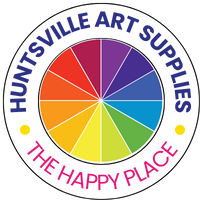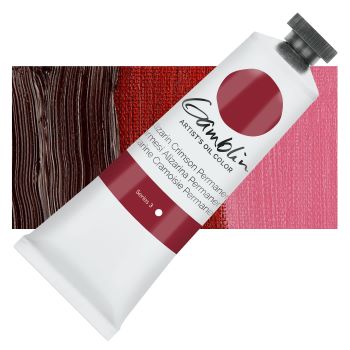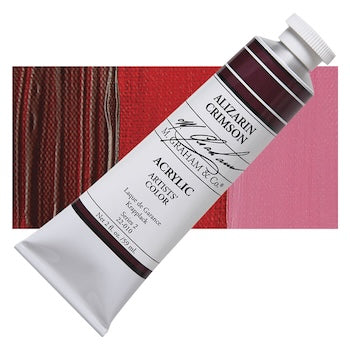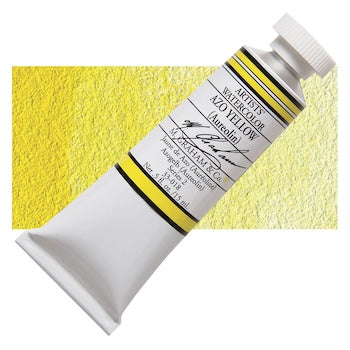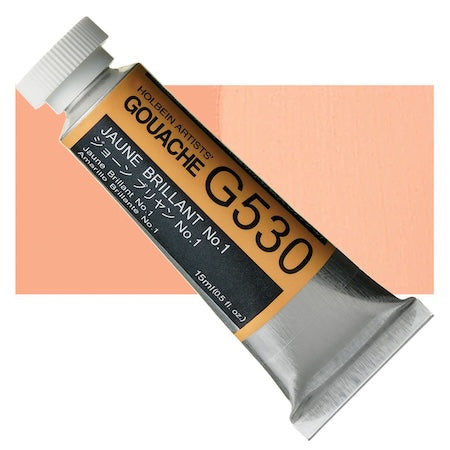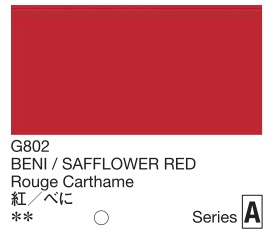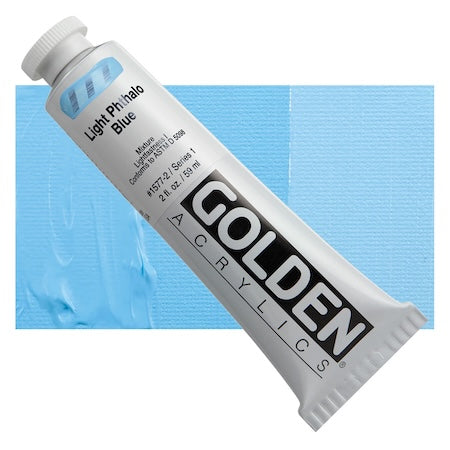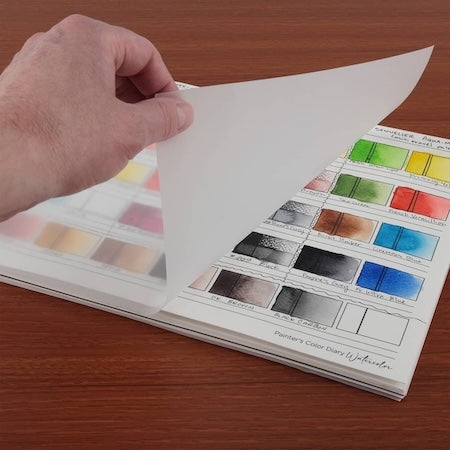Why Are Prices Increasing for Paints Containing Cadmium?
Share
As an artist, you’ve probably noticed the rising cost of paints that contain cadmium. Whether you’re stocking up on vibrant reds, luminous yellows, or rich oranges, the price tags on these colors might make you pause. But why is this happening? Let’s break it down in a way that highlights the fascinating intersection of art, global supply chains, and technology.
What Is Cadmium and Why Is It Used in Paint?

Cadmium is a naturally occurring metal that, when processed, creates some of the most vibrant and durable pigments in the art world. Cadmium pigments have been prized by artists for their unmatched opacity, permanence, and intensity. Unlike many other pigments, cadmium-based paints are highly resistant to fading, making them ideal for professionals seeking archival-quality materials.
The Geopolitical Puzzle of Cadmium Production
Cadmium is primarily produced as a byproduct of zinc mining. Countries like China, South Korea, and Kazakhstan are some of the largest producers of cadmium. These nations play a crucial role in the global supply chain, and their policies and economic conditions can significantly affect cadmium availability.
Here’s the catch: cadmium isn’t just for artists. It’s a critical material for many industries, especially in advanced technologies like solar panels and batteries for electric vehicles (EVs). As the demand for renewable energy solutions and EVs increases worldwide, cadmium is being diverted away from the pigment industry and into these rapidly growing sectors.
How Advancing Technologies Impact Cadmium Prices

1.Solar Panels: Cadmium telluride is a key component in some of the most efficient and cost-effective solar panels. With the global push for renewable energy, demand for cadmium in this sector is surging.
2.Electric Vehicles: Batteries, particularly nickel-cadmium (NiCd) batteries, are used in some EV applications. While lithium-ion technology is dominant, cadmium still plays a supporting role in the industry.
3.Global Electrification: The increasing focus on building sustainable energy infrastructures means cadmium is in high demand for industrial applications.
These competing uses are driving up the price of cadmium as mining operations struggle to keep up with the growing demand.
Environmental and Regulatory Challenges
Environmental concerns also play a role in the cost increase. While cadmium pigments are safe when used properly, cadmium itself is toxic in its raw form. Stricter mining regulations and safety standards, particularly in Europe and North America, have added to production costs. Additionally, some regions are enacting policies to limit cadmium use, further tightening supply chains.
What Does This Mean for Artists?
For artists, the rising cost of cadmium pigments translates to higher prices for paints like Cadmium Red, Cadmium Yellow, and Cadmium Orange. Paint manufacturers are working hard to minimize the impact on consumers, but the global factors at play make it challenging to maintain previous price points.
As the market prices for paint and the materials artists work with continue to rise, the premium paint makers are increasing all paints, on average, of 11% and as high as 48%. As an artist, it’s important to consider adjusting the pricing of your artwork to reflect these increases. Your art is not only a reflection of your talent and creativity but also of the materials and effort you invest. Just as other industries adjust their prices to account for rising costs, artists should ensure that their pricing reflects the value of their work and the resources required to create it.
This not only helps you maintain a sustainable art practice but also communicates to collectors and buyers the true value of your art in today’s market. Educating your audience about the cost of premium materials, like cadmium-based paints, can also enhance their appreciation for the craftsmanship and quality of your work.
This approach helps keep your art business thriving while ensuring your work remains financially rewarding in the face of rising material costs.
Supporting Artists Through the Challenges

At Huntsville Art Supplies, we understand how important high-quality materials are to your creative process. That’s why we’re committed to helping you navigate these changes by offering:
- Exclusive Discounts: Keep an eye out for promotions on cadmium-containing paints and other premium art supplies and pickup a loyalty card next time you come in to Huntsville Art Supplies for exclusive discounts.
- Workshops and Guidance: Join us for classes where we teach techniques for maximizing the impact of your materials.
- Handmade Paint Swatches: At Huntsville Art Supplies our team has taken the time to create hand painted color swatches to show the true colors of the paint to help you find your perfect color.
- Expert Advice: Not sure which alternative to try? Our team is here to help you find the best solutions for your artistic needs.
Are There Alternatives?
If you’re feeling the pinch, consider exploring these options:
Hue Colors: Many manufacturers offer “cadmium hues,” which are synthetic alternatives designed to mimic the appearance of cadmium pigments. While they may not match the opacity or lightfastness of genuine cadmium, they’re often more affordable.
Other Pigments: Experimenting with non-cadmium pigments can help expand your palette and reduce costs. Modern pigment technologies offer many excellent substitutes.
Alternatives to Cadmium Red, Cadmium Yellow, and Cadmium Orange

If the rising cost of cadmium-based paints or concerns about cadmium’s environmental impact have you rethinking your palette, don’t worry—there are excellent alternatives available. While cadmium pigments are known for their vibrant opacity and durability, modern pigments offer impressive substitutes that can help you achieve similar results without sacrificing quality.
Cadmium Red Alternatives
Pyrrole Red:
- Pros: Pyrrole Red is a bright, highly saturated red with excellent lightfastness. It’s a popular substitute for Cadmium Red due to its vibrant intensity and opacity. Perfect for bold strokes and rich undertones.
- Con: Pyrrole Red lacks the same level of opacity as true Cadmium Red, requiring more layers for full coverage in certain applications.
Naphthol Red:
- Pros: This warm, semi-transparent red offers a slightly different texture but retains excellent vibrancy. It’s ideal for glazing techniques and creating warm mixtures.
- Con: Naphthol Red is more prone to fading over time compared to genuine Cadmium Red, particularly in high-light environments.
Quinacridone Red:
- Pros: A versatile red with high transparency and exceptional lightfastness. Great for layering and achieving cooler red tones.
- Con: Its transparency makes it challenging to achieve the bold, opaque coverage that Cadmium Red provides in a single layer.
Cadmium Yellow Alternatives
Hansa Yellow Medium:
- Pros: A bright, vibrant yellow with good opacity and excellent mixing properties. It’s a great choice for creating clean greens and oranges.
- Con: Hansa Yellow Medium is less opaque than Cadmium Yellow, which can result in less vibrant mixes when used in small quantities.
Benzimidazolone Yellow (Benz Yellow):
- Pros: Known for its bright, warm tone, this yellow is a durable alternative with strong tinting strength.
- Con: Benz Yellow can sometimes skew slightly cooler in mixes, lacking the exact warmth of Cadmium Yellow in certain blends.
Arylide Yellow:
- Pros: A semi-transparent yellow with vibrant, sunny hues. It’s particularly useful for layering and glazing.
- Con: Its transparency makes it unsuitable for applications requiring strong, opaque yellows, unlike Cadmium Yellow.
Cadmium Orange Alternatives
Pyrrole Orange:
- Pros: A bright and bold orange with excellent opacity. This pigment is ideal for creating vivid highlights and striking accents.
- Con: Pyrrole Orange tends to lean slightly redder, making it less suited for creating the exact warm, true orange of Cadmium Orange.
Benzimidazolone Orange (Benz Orange)
- Pros: This warm, lightfast orange is a great substitute with a similar brightness and opacity to Cadmium Orange.
- Con: Benz Orange can be slightly less opaque, requiring more layers for full coverage compared to Cadmium Orange.
Permanent Orange
- Pros: A reliable, cost-effective alternative with vibrant tones and good mixing properties for creating lively orange hues.
- Con: Permanent Orange often lacks the same brilliance and richness as Cadmium Orange, especially in direct sunlight.
These comparisons highlight the strengths and limitations of each alternative, helping you make informed decisions as you adapt your palette. While no substitute is perfect, these pigments open up exciting opportunities for exploration in your art.
Tips for Transitioning to Alternatives
•Test Before You Commit: Every pigment behaves slightly differently. Consider purchasing small tubes to test alternatives in your work before investing in larger quantities.
•Adjust Your Techniques: Some alternatives may be more transparent or have different tinting strengths compared to cadmium pigments. Experiment with layering and glazing to adapt.
•Mix Smarter: Use a color wheel to find complementary pigments that enhance the vibrancy of your alternatives.
With these options, you can maintain the vibrancy and impact of your artwork while exploring new creative possibilities. Huntsville Art Supplies carries many of these cadmium-free alternatives—stop by to find the perfect match for your palette!
Frequently Asked Questions About Cadmium Paint
1. Why is cadmium used in artist paints?
Cadmium is prized in artist paints for its unmatched vibrancy, opacity, and lightfastness. These pigments produce bold, saturated colors that resist fading over time, making them ideal for archival-quality artwork.
2. Is cadmium paint toxic?
When used properly, cadmium paints are safe for artists. Most modern cadmium paints are formulated in a way that minimizes health risks, as the cadmium is bound in a pigment that does not easily release harmful particles. However, precautions like avoiding ingestion, using proper ventilation, and wearing gloves when necessary are recommended.
3. Are cadmium-free alternatives as good as the real thing?
Cadmium-free alternatives can closely mimic the look and feel of genuine cadmium paints, but they often differ in opacity, vibrancy, and mixing properties. For example, synthetic hues may require more layering to achieve the same level of coverage. Artists may need to adapt their techniques slightly when using these substitutes.
4. Why are cadmium paints becoming more expensive?
The rising cost of cadmium paints is driven by increased global demand for cadmium in industries like renewable energy (solar panels) and electric vehicle batteries. Geopolitical factors and stricter mining regulations have also contributed to supply constraints, further raising prices.
5. Can cadmium paint be shipped internationally?
Certain countries restrict or regulate the import of cadmium-based paints due to environmental and health concerns. Check with the supplier or retailer to ensure compliance with local regulations if you plan to ship cadmium paint internationally.
6. How can I safely dispose of cadmium paint?
Cadmium paint should never be washed down the sink or thrown in the trash. Instead, dispose of leftover paint and used rags at a local hazardous waste facility. Many communities offer specific collection programs for art materials.
7. Are cadmium paints better for specific styles of art?
Cadmium paints excel in styles that require bold, opaque colors and durable results, such as oil painting, acrylic painting, and plein air work. They’re especially favored for their vibrant reds, yellows, and oranges, which remain luminous even in thick applications.
8. Where can I find cadmium paint and alternatives?
At Huntsville Art Supplies, we carry a range of genuine cadmium paints and high-quality alternatives. Stop by our store or visit our online shop to explore our selection, and our staff can help you find the best option for your needs.
If you have additional questions about cadmium paint or its alternatives, don’t hesitate to reach out to us at Huntsville Art Supplies. We’re always here to help artists make informed choices about their materials!
Final Thoughts
The rising cost of cadmium-based paints is a reminder of how interconnected our world is. A material that brings vibrancy to your canvas is also powering solar panels and electric vehicles. While these price increases are challenging, they also reflect exciting advancements in technology and sustainability.
At Huntsville Art Supplies, we’re committed to helping artists navigate these changes. Whether it’s by offering advice on alternative pigments, running promotions on your favorite cadmium paints, or providing workshops on how to maximize your materials, we’re here to support you every step of the way.
Don’t hesitate to reach out with questions or stop by to explore your options. Together, we can keep your creativity thriving—no matter the cost of cadmium.
